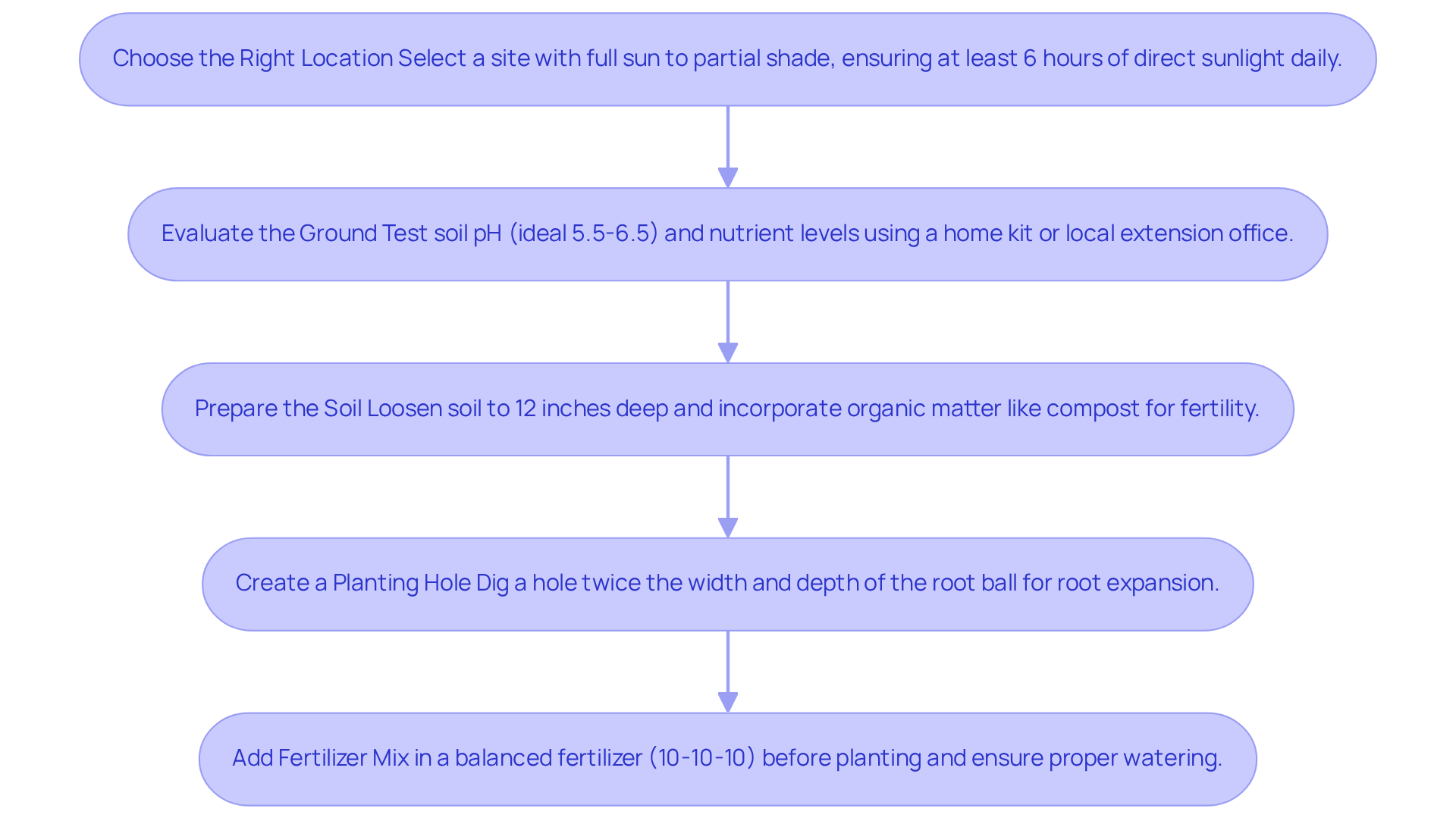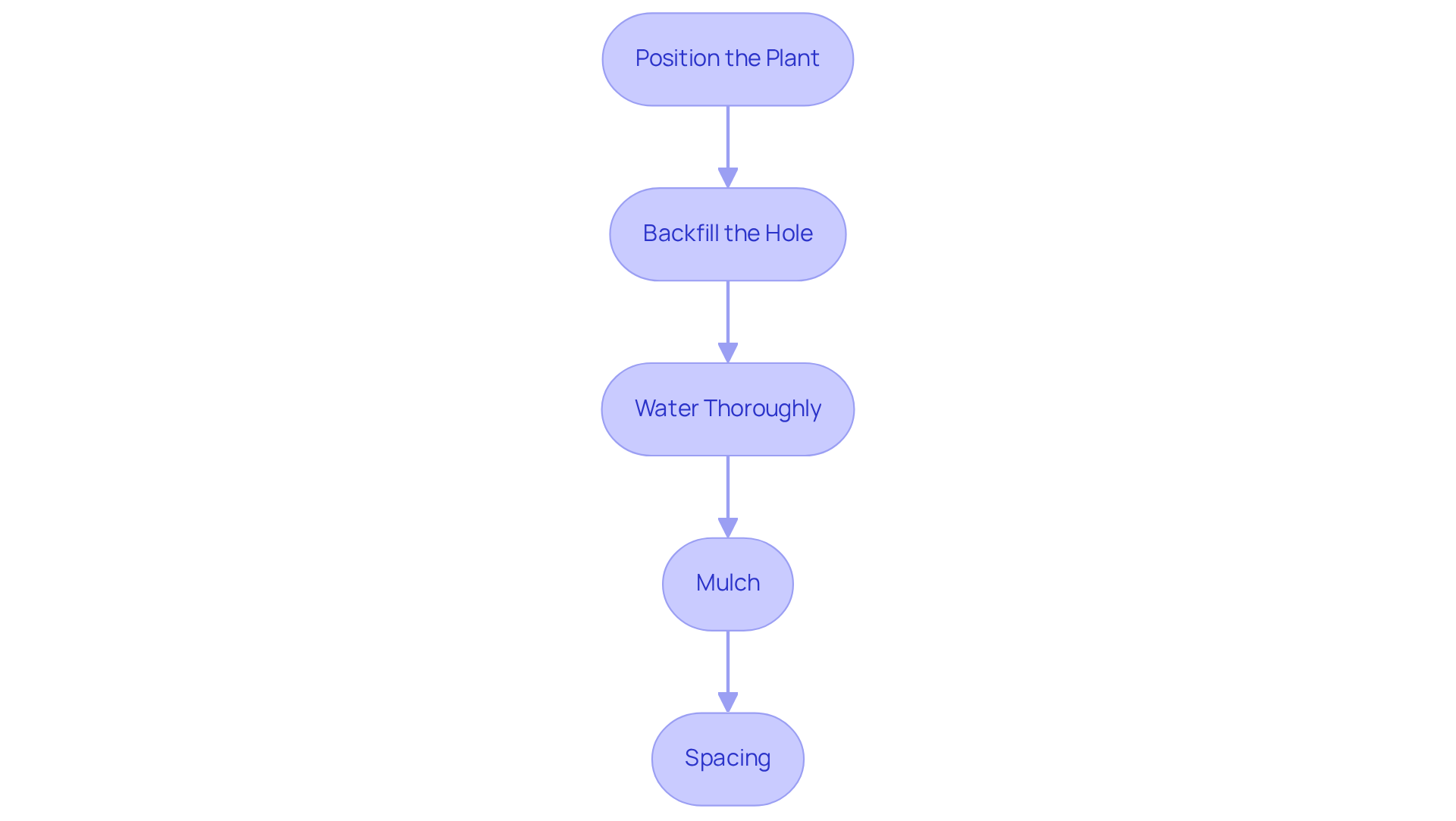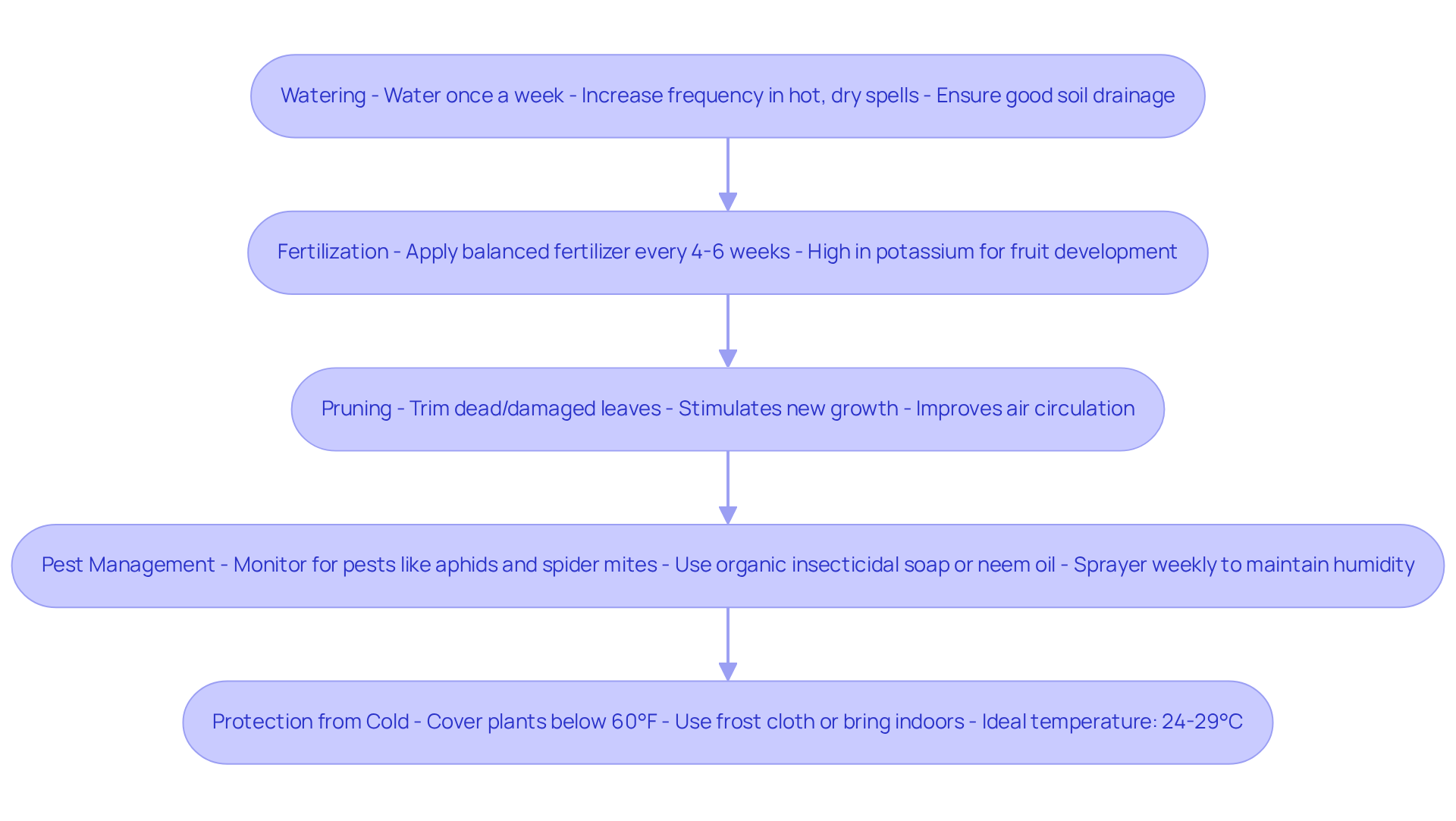Mastering the art of growing the Patupi banana plant can transform any garden into a tropical paradise, offering both beauty and delicious fruit. This guide explores the essential steps for successful growth, from site preparation to ongoing maintenance, ensuring that both novice and experienced gardeners can effectively nurture their plants. However, various challenges, such as pests, nutrient deficiencies, and environmental stresses, may arise. Therefore, how can one ensure that their Patupi banana plants thrive and yield a bountiful harvest?
🍌 Want to grow Kokopo Patupi Banana Plant in your Garden?
Explore Patupi Banana Plant from Everglades Farm - shipped directly from Florida.
- Site preparation
- Planting techniques
- Maintenance
- Troubleshooting common issues
Prepare Your Planting Site and Soil
-
Choose the Right Location: It is crucial to select a site that receives full sun to partial shade. This ensures that the patupi banana plant variety receives at least 6 hours of direct sunlight daily, which is essential for optimal development.
-
Evaluate the Ground: Conduct a test to determine the pH and nutrient levels of the soil. The ideal pH range for banana plants is between 5.5 and 6.5, as this supports healthy growth and fruit production. You can test the ground using a home testing kit or by sending samples to a local agricultural extension office for analysis.
-
Prepare the Soil: Loosen the soil to a depth of at least 12 inches. It is beneficial to incorporate organic matter such as compost or well-rotted manure, which enhances fertility and drainage. Aim for a rich, loamy texture that retains moisture while allowing excess water to drain effectively.
-
Create a planting hole: Dig a hole that is twice the width and depth of the root ball of your patupi banana plant. This ample cavity aids in root expansion and nutrient access, encouraging vigorous development.
-
Add Fertilizer: Prior to planting, mix in a balanced fertilizer to provide essential nutrients. A slow-release fertilizer with a 10-10-10 ratio is recommended to support the growth and development of the vegetation. Additionally, ensure that fruit-bearing plants receive 1-2 inches of water weekly to thrive, and space them 5-6 feet apart to promote robust root growth.

Plant the Patupi Banana Correctly
-
Position the Patupi banana plant by centering the specimen in the prepared hole, ensuring that the top of the root ball is level with the surrounding earth surface. This positioning is vital for optimal growth, as it allows the plant to establish itself effectively. Similarly, for soursop trees, careful attention to placement is essential; they flourish in well-drained ground and require ample sunlight for healthy development.
-
Backfill the Hole: Next, carefully fill the hole with the prepared earth, taking care to eliminate any air pockets that may hinder growth. Compact the earth gently around the base of the vegetation to provide stability, which is crucial for supporting the organism as it matures. When planting soursop, it is important to ensure that the ground is rich in organic matter to promote robust root development.
-
Water Thoroughly: After planting, irrigate the specimen deeply to help settle the soil around the roots. This initial watering is essential as it provides the necessary moisture for the organism to begin establishing itself. For both the patupi banana plant and soursop species, regular watering is crucial, particularly during dry periods, to prevent stress and encourage healthy growth.
-
Mulch: Apply a layer of organic mulch around the base of the plant, ensuring it remains a few inches away from the stem. Mulching serves multiple purposes: it retains moisture, suppresses weeds, and regulates soil temperature, creating a beneficial environment for growth. This practice is equally advantageous for soursop trees, which also benefit from a well-mulched base to maintain soil moisture.
-
Spacing: When planting multiple banana plants, it is important to space them at least 8 to 12 feet apart. This spacing accommodates their mature size and promotes good air circulation, reducing the risk of disease while encouraging healthy growth. Likewise, soursop trees should be spaced adequately to allow for their expansive canopy and to minimize competition for nutrients.

Maintain and Care for Your Patupi Banana Plant
-
Watering: It is essential to maintain consistent moisture in the soil without oversaturation. Thoroughly water the patupi banana plant once a week, increasing the frequency during hot, dry spells. Water stress can lead to yield losses of up to 65%, making it crucial to ensure good soil drainage to prevent root rot, which can occur if the roots are submerged in excess water.
-
Fertilization: Throughout the growing season, apply a balanced fertilizer every 4-6 weeks. Choose fertilizers that are high in potassium, as this nutrient is vital for promoting fruit development. Agronomists indicate that the use of nitrogen and potassium can significantly enhance the development and yield of banana crops, underscoring the importance of adhering to a systematic fertilization plan.
-
Pruning: Regularly trimming dead or damaged leaves stimulates new growth and enhances air circulation around the vegetation. This practice not only improves the appearance of the foliage but also helps prevent diseases that can arise from stagnant moisture on decaying leaves.
-
Pest Management: Vigilantly monitor for common pests such as aphids and spider mites. In the event of an infestation, utilize organic insecticidal soap or neem oil to effectively control these pests, ensuring the well-being of your fruit-bearing crop without resorting to harsh chemicals. Additionally, using a sprayer weekly can help maintain humidity levels around the vegetation, thus preventing spider mites.
-
Protection from Cold: When temperatures drop below 60°F, it is important to take precautions to safeguard your patupi banana plant. Cover the plants with frost cloth or bring potted greenery indoors to protect them from cold damage, which can hinder development and fruit yield. Ideally, banana plants thrive in temperatures ranging from 24-29 degrees Celsius and require humidity levels between 60-90% for optimal development.

4. Troubleshoot Common Growing Issues
-
Yellowing Leaves: Yellowing leaves often signal nutrient deficiencies or overwatering. To address this, check the moisture levels of the ground; if it is consistently wet, reduce watering. If nutrient levels are low, consider applying a balanced fertilizer to replenish essential nutrients like nitrogen and magnesium, which are crucial for healthy growth.
-
Wilting: Wilting can indicate either underwatering or root rot. Ensure the greenery receives sufficient water, allowing the upper inch of soil to dry out between watering sessions. If the soil retains too much moisture, improve drainage by using well-draining soil and pots with drainage holes to prevent root rot.
-
Pest Infestations: If you notice holes in the leaves or sticky residue, examine the vegetation for pests such as aphids, spider mites, or passion vine hoppers. Address infestations swiftly using organic pesticides or neem oil, applying it according to the product guidelines to safeguard the vegetation without harming beneficial insects. For passion fruit vines, recognizing and managing passion vine hoppers is essential, as these pests can significantly impact the health of the plants. Many growers have successfully managed wilting of the patupi banana plant by adjusting their watering practices and implementing effective pest control strategies that have kept their crops healthy.
-
Poor Fruit Development: Insufficient fruit production may result from inadequate sunlight or nutrient levels. Ensure the greenery receives at least six hours of bright, direct sunlight each day. Adjust fertilization practices to provide the necessary nutrients, and monitor for any signs of stress that could hinder fruiting.
-
Fungal Diseases: Fungal infections can manifest as leaf spots or wilting. To combat this, enhance air circulation around the vegetation by spacing it appropriately and avoiding overhead watering, which can create a humid environment favorable to fungal growth. Regularly inspect the plant for early signs of disease to take corrective action swiftly. Addressing these common challenges can lead to a more rewarding gardening experience.
Conclusion
- Site selection
- Soil preparation
- Proper planting techniques
- Ongoing care, including watering, fertilization, and pest management
🍌 Cultivate Your Own Tropical Paradise Today!
Frequently Asked Questions
What is the ideal location for planting patupi banana plants?
How can I evaluate the soil for planting banana plants?
How should I prepare the soil before planting?
What size should the planting hole be for a patupi banana plant?
What type of fertilizer should I use when planting banana plants?
How much water do fruit-bearing banana plants need?
How far apart should I space my banana plants?





0 comments